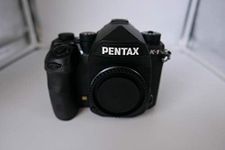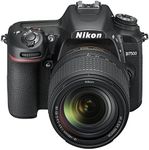Buying Guide for the Best Dslr Camera For Beginners
Choosing your first DSLR camera can feel overwhelming, but it’s all about finding a model that matches your needs and helps you grow as a photographer. As a beginner, you want a camera that’s easy to use, offers room to learn, and delivers good image quality. Focus on features that matter most for your style of photography, whether it’s family events, travel, or creative projects. Don’t get distracted by the highest numbers—think about what will actually make your experience enjoyable and help you learn.Sensor SizeThe sensor is the part of the camera that captures light and creates your image. Sensor size affects image quality, low-light performance, and depth of field. Most beginner DSLRs have APS-C sensors, which are smaller than full-frame sensors but still offer great quality and are more affordable and lightweight. Full-frame sensors are larger and perform better in low light, but they make the camera bigger and heavier. For most beginners, an APS-C sensor is a perfect balance between quality and ease of use.
MegapixelsMegapixels tell you how many millions of pixels the camera uses to create an image. More megapixels mean you can print larger photos or crop images without losing detail, but for most beginners, anything between 16 and 24 megapixels is more than enough. Higher megapixels don’t always mean better photos, especially if you’re mainly sharing images online or printing standard sizes. Focus on learning composition and technique rather than chasing the highest megapixel count.
Autofocus SystemThe autofocus system helps the camera quickly and accurately focus on your subject. Entry-level DSLRs usually have fewer autofocus points, but they’re still effective for most situations. If you plan to photograph moving subjects like kids or pets, look for a camera with more autofocus points and good tracking features. For general photography, a basic autofocus system will work well and keep things simple as you learn.
Ease of Use and ControlsA beginner-friendly camera should have intuitive menus, helpful guides, and easy-to-reach buttons. Some cameras offer built-in tutorials or scene modes that help you get started without needing to understand all the technical details. If you’re new to photography, look for a camera that feels comfortable in your hands and doesn’t overwhelm you with too many buttons or complex menus. This will make learning more enjoyable and less frustrating.
Lens CompatibilityDSLRs use interchangeable lenses, so it’s important to consider what lenses are available for the camera you choose. Some brands have a wider selection of affordable beginner lenses, while others may be more limited. Think about the types of photos you want to take—portraits, landscapes, or close-ups—and make sure there are lenses that fit your interests. Starting with a camera that comes with a versatile kit lens is a good way to begin.
Viewfinder and LCD ScreenThe viewfinder lets you compose your shot by looking through the lens, while the LCD screen can be used for reviewing photos or shooting in live view mode. Some cameras have tilting or touchscreens, which make it easier to shoot from different angles or navigate menus. If you like taking photos at unusual angles or want a more modern experience, look for a camera with a flexible screen. Otherwise, a standard fixed screen and optical viewfinder are perfectly fine for learning the basics.
Connectivity FeaturesModern cameras often include Wi-Fi or Bluetooth, making it easy to transfer photos to your phone or computer. This is helpful if you want to share your images quickly on social media or back them up without using cables. If instant sharing is important to you, look for a camera with built-in wireless features. If not, you can always transfer photos the traditional way using a memory card.












